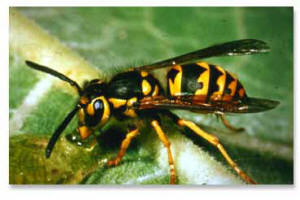|
 If you have a compacted yard, or have a deep thatch layer, these
seeding dates also define ideal times to dethatch or aerate.
Thatch layers should not be over 1/2 inch deep for optimum
growing conditions. When aerating, make sure you use a core type
aerator. If you have a compacted yard, or have a deep thatch layer, these
seeding dates also define ideal times to dethatch or aerate.
Thatch layers should not be over 1/2 inch deep for optimum
growing conditions. When aerating, make sure you use a core type
aerator.
Fall fertilization is also a good practice. If you haven't
fertilized in the last month, consider applying a fertilizer
treatment around September 1. Use about 8 pounds of 13 13 13
fertilizer per
1000 square feet of lawn. Try to avoid the high nitrogen
fertilizers this late in the year. It's hard enough to keep up
with the mowing as it is, and nitrogen promotes top growth. The
even analysis fertilizers will also promote root growth, which
is what we want going into the late fall and winter.
Crabgrass and other annuals grass weeds can be seen about
everywhere. They will die with the first frost, so treatment is
not available, or recommended, in the fall. Make a note of where
these grasses are, and an overseeding to thicken up the grasses
you want there may help crowd out the annuals. Preventative
treatments may also be applied in the spring (around April 1
depending on soil temperatures) to kill the germinating seeds.
As many have found out, a second treatment about June 1 is also
necessary since the products only last six to eight weeks.

Last, but not least, is broadleaf weed control. Fall is a
particularly good time to treat problem perennial weeds since
they are sending food down to the roots to overwinter. A spray
about the 3rd or 4th week of September (making sure to use the
appropriate product) can do a world of good on the perennial
weeds. Remember to be very careful with herbicides around
perennial plants since they are also getting ready to
overwinter. Also, waiting this late in the season reduces drift
potential for the neighborís garden. Dicamba is particularly
prone to vapor drifting, for up to two weeks, with hot, sunny
conditions. Itís hard to get a good weather forecast for two
weeks, let alone the week we are in.

Yellowjacket Hornets
After discussing the black and yellow syrphid flies earlier,
itís time for another black and yellow insect. Yellowjackets are
the other common yellow and black insect this time of year,
frequently spotted when the festival season begins in the late
summer and fall period.
[to top of second column] |

Yellowjackets can be very aggressive in both biting and stinging.
They are usually about twice the size of the syrphid flies, and
the easiest way to tell them apart is to count the wings
(hopefully without getting stung). Flies have one pair, and bees
and wasps have two pairs. Technically the bald faced hornet is
also a yellowjacket, but has more white on the face with a black
body, rather than the black and yellow banded pattern of the
eastern yellowjacket.
Yellowjackets are most frequently encountered when they scavenge
for food. Their habit of feeding on nectar and sugar can create
a nuisance. Yellowjackets are attracted to open cups and cans of
soda and other sweet liquids. They are also attracted to open
cans of garbage, bright flowery clothing, and floral scented
perfumes. All outside garbage cans must be kept clean and well
covered to reduce yellowjacket problems. Contact with the wasps
can be decreased by reducing these attractions at picnics and
other outings. In situations closer to home, the elimination of
overripe fruit from gardens and orchards will dramatically
decrease the number of scavenging yellowjackets. Holding
gatherings indoors and using screens on windows will also help
avoid yellowjacket problems.
There are a variety of traps on the market that claim to attract
yellowjackets. These traps are baited with the scent of rotting
fruit or other odors equally as appetizing to the yellowjackets.
It is questionable whether these traps can out-compete the
natural and man-made attractants described above. However, it is
certain that through proper sanitation and removal of natural
and man-made attractants, yellowjacket contact can be reduced.
However, in situations where the potential for repeated contact
exists, other management methods may be necessary. These traps
can also attract more yellowjackets if placed close to the home
or patio, so place them to attract the insects away from where
youíll be.
[By JOHN FULTON, COUNTY EXTENSION
DIRECTOR SERVING LOGAN, MENARD, AND SANGAMON COUNTIES]
 |